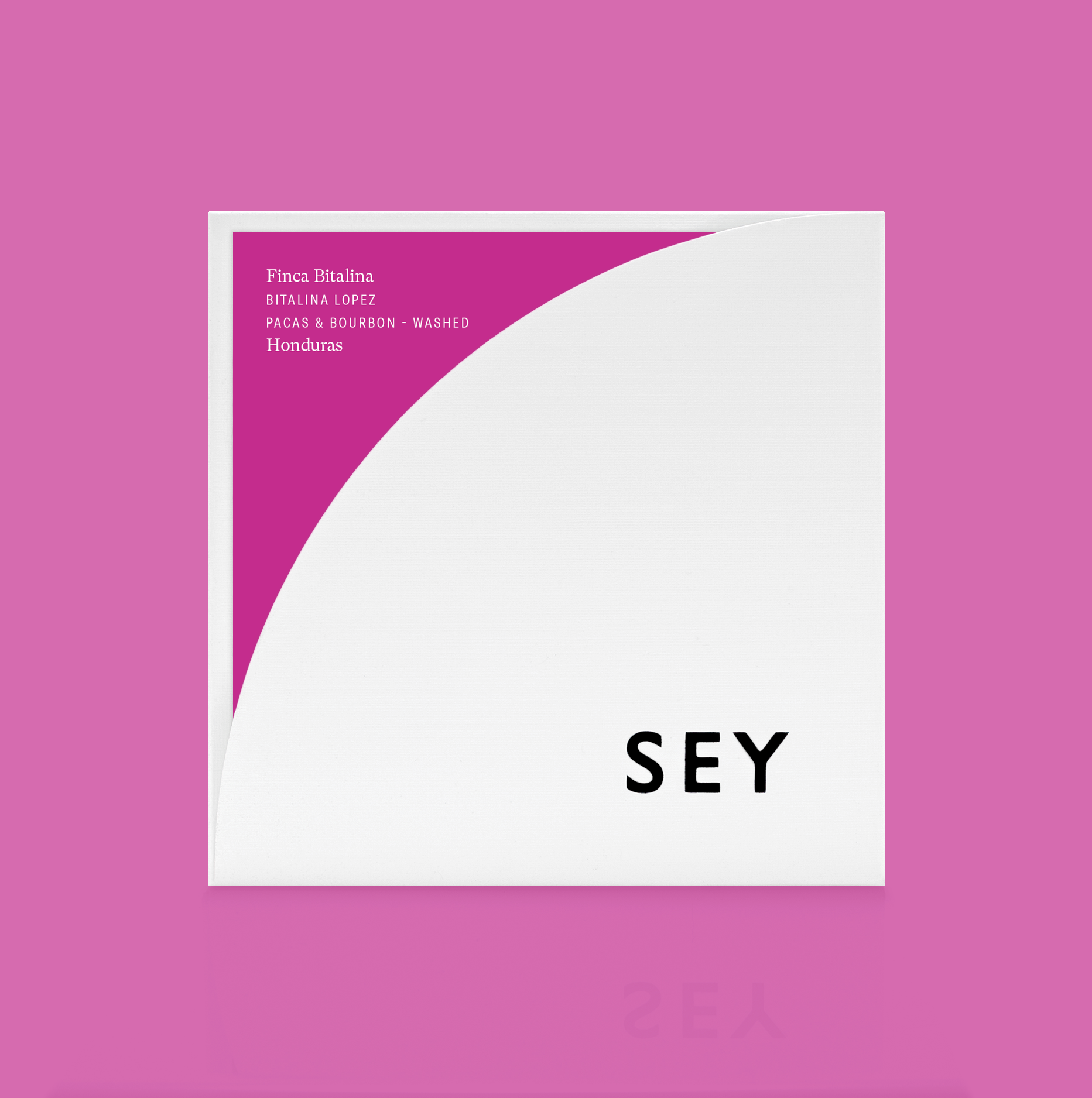
Bitalina has an extremely small garden of .3 hectares (.75 acres) growing both Pacas and traditional Bourbon. This coffee is exceptionally clean and intensely sweet, with candied lemon acidity and deep blackberry and plum notes to round out the profile with a satisfyingly dense mouthfeel.
50% Pacas, 50% Bourbon
Santa Bárbara
1,750 masl
May, 2020
Harvested at peak ripeness. Floated. Dry fermented for 22 hours. Manually washed six times with clean water. Dried on raised beds for 15 days.
ABOUT BITALINA LOPEZ
Bitalina Lopez’s coffee continues to be one of our favorites from Santa Bárbara. This is our second year working with her coffees and we continue to be extremely impressed Bitalina’s small coffee garden sits at 1,750 masl on Santa Bárbara Mountain, and produces very complex and interesting coffees. She grows Pacas and Bourbon, and only producers around 4 bags (609 lbs.) of exportable coffee. We again bought all of it, and continue to be excited by our relationship with this extraordinary producer.
ABOUT BOURBON & PACAS
Bourbon is the most famous of the Bourbon-descended varieties. It is a tall variety characterized by relatively low production and excellent cup quality, but is susceptible to all the major coffee plant diseases. In the early 1700’s French missionaries carried Bourbon from Yemen to Bourbon Island (now Réunion), giving it the name it has today. The variety spread to other parts of the world beginning in the mid-1800’s as the missionaries moved to establish footholds in Africa and the Americas. Today, in Latin America, Bourbon has largely been replaced by varieties that descend from it—notably Caturra, Pacas, Catuai, and Mundo Novo—although Bourbon itself it is still cultivated in El Salvador, Guatemala, Honduras, and Peru. Pacas is a natural mutation of Bourbon found mainly in El Salvador and Honduras. Similar to other Bourbon mutants, Pacas has a single-gene mutation that causes the plant to grow smaller (dwarfism), and is very susceptible to disease, making it riskier to grow.
Pricing Details
Farm Gate (Local)
189.74 LEMPIRA/KG
Farm Gate (USD)
$7.70/KG
FOB
$9.36/KG
FOT
$12.00/KG
The cost of getting a coffee from cherry to beverage varies enormously depending on its place of origin and the location of its consumption. The inclusion of price transparency is a starting point to inform broader conversation around the true costs of production and the sustainability of specialty coffee as a whole.